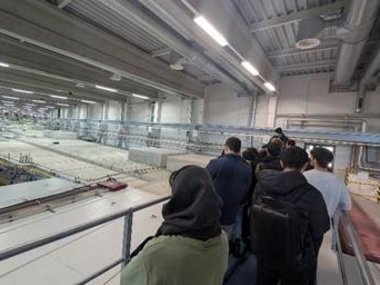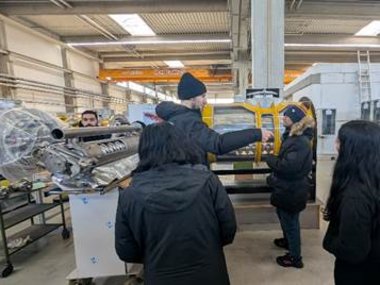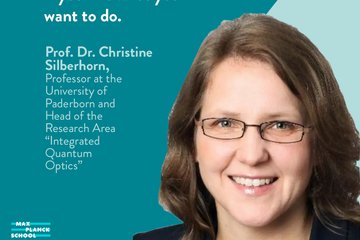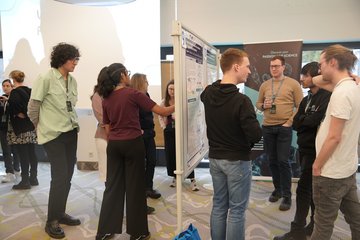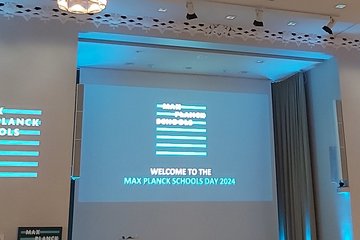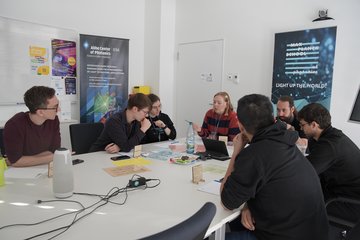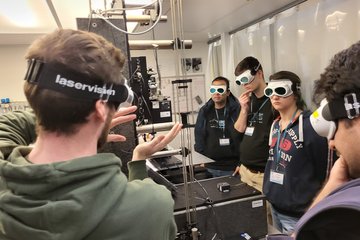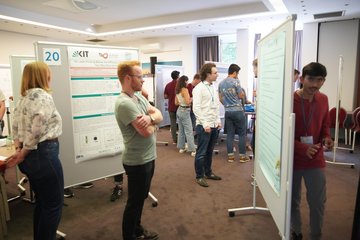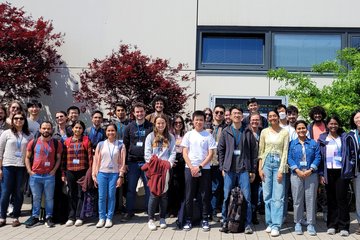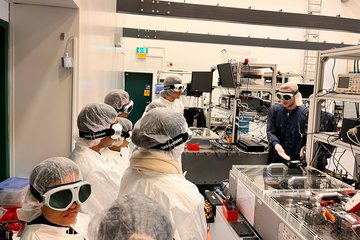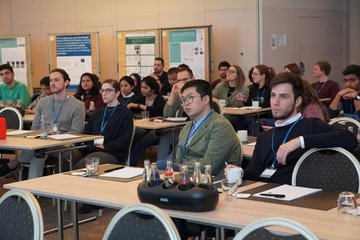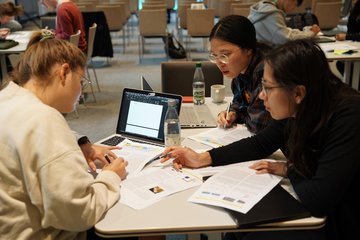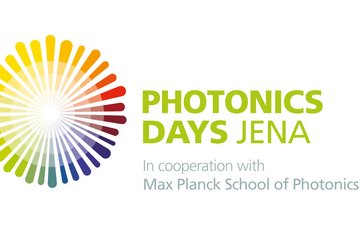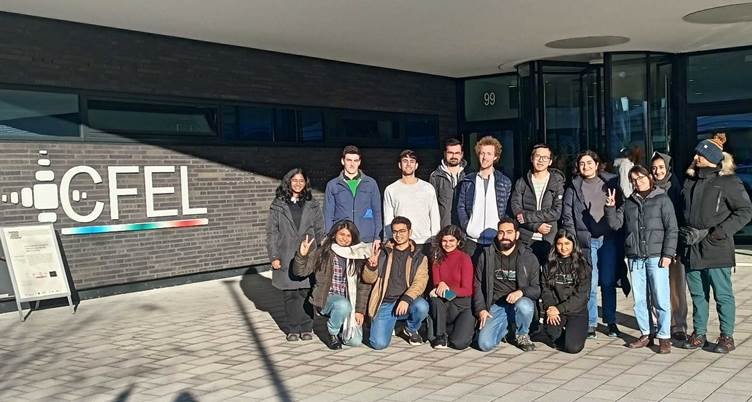
Visit to the Deutsches Elektronen-Synchrotron (DESY)
Location Visit
End of November 2024, our students had the opportunity to visit the Deutsches Elektronen-Synchrotron (DESY) in Hamburg and gain fascinating insights into the operation of its innovative research instruments as well as its current research priorities.
DESY is one of the world's leading accelerator centers, enabling research in fields such as elementary particles, nanomaterials, and biomolecules with its unique facilities, and a strong partner of the Max Planck School of Photonics where researchers from over 40 nations get offered exciting interdisciplinary opportunities for young scientists.
Day 1: European XFEL

During a guided tour, the students had the opportunity to experience the SASE process (Self-Amplified Spontaneous Emission) generated at the European XFEL. The 3.4-kilometer-long European XFEL produces extremely intense X-ray flashes, which are utilized by scientists worldwide to map atomic details of viruses, film chemical reactions in real-time, and study processes occurring inside planets.
Interactive exhibits and models of undulators vividly demonstrated how free electrons are accelerated through a series of undulators to generate X-rays. The practical applications of these processes were illustrated by showcasing various devices that utilize this X-ray radiation for their functionality.
Additionally, the students were able to visit the control rooms and learn about groundbreaking research results achieved by scientists at the facility.
Interactive exhibition about the release of X-rays, picture taken by Manasa
After a shared dinner and a visit to Hamburg's Christmas markets, the evening concluded with a boat trip.
Day 2: PETRA III, FLASH and the AMTF Hall
The day began with a lecture by Frank X. Kärtner, head of the Ultrafast Optics and X-ray Group at DESY, followed by a presentation by Nina Rohringer, head of the Theoretical and Ultrafast X-ray Science Department. Both speakers introduced the research facilities located on the Bahrenfeld campus, which includes DESY, and provided insights into their current research.
The program continued with a guided tour of DESY's various facilities, including PETRA III, FLASH, and the AMTF Hall.
PETRA III is one of the brightest synchrotron-based X-ray sources in the world. With 25 beamlines and nearly 60 measuring stations, the facility offers ideal conditions for a wide range of research projects. Particularly impressive is the construction of its floor, which is recognized as the longest continuous concrete slab in the world, ensuring extreme stability. This design minimizes disruptive vibrations, allowing for highly precise experiments. Daniel, a PhD student at DESY, explained the operation of PETRA III. The experience of being surrounded by highly accelerated electrons and collimated X-rays in shielded pipes was truly remarkable!
FLASH is the world's first free-electron laser in the X-ray range. The linear accelerator generates intense and ultra-short X-ray flashes within femtoseconds—quadrillionths of a second. Using an aerial view of the facility, Daniel provided a clear and engaging explanation of the various components and processes involved in the FLASH setup.
AMTF Hall – Accelerator Module Test Facility
As the name suggests, the AMTF Hall is where components of large accelerators are tested before being implemented. Various parts that had been previously used or slightly damaged were on display, providing an opportunity to better understand their functionality and significance.
After the lunch break, Maria Chekhova, a professor at FAU Erlangen and a member of the MPSP, delivered a lecture. She provided insights into the diverse research areas of her team, ranging from the generation of non-classical light to its various applications.
The visit to DESY offered a firsthand look at groundbreaking research on the generation and application of free-electron lasers and synchrotron radiation. The guided tours, lectures, and discussions provided valuable support for students in reflecting on and shaping their own research careers.


